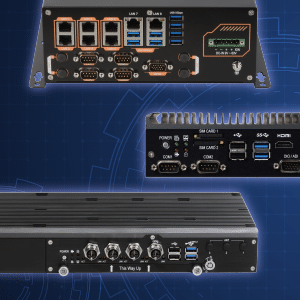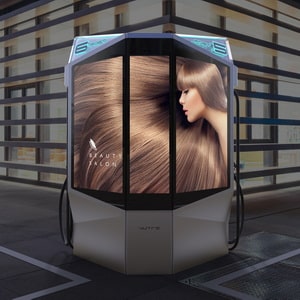What is CAN Bus? A Comprehensive Guide to the Backbone of Modern Automotive Systems

In the era of dynamic automotive technologies, the Controller Area Network (CAN) Bus has emerged as a cornerstone for efficient communication between various electronic control units (ECUs) within vehicles and industrial systems. It helps streamline complex data interactions, enhances vehicle performance, and reduces overall cost and weight. Initially developed by Bosch in the 1980s, the CAN Bus has since been widely adopted across numerous applications, including industrial automation, maritime, and even model railways.
At the core of the Controller Area Network (CAN) Bus is a highly advanced communication methodology that enables seamless integration and prioritization of messages. This methodology ensures that high-priority data is transmitted quickly, making it ideal for modern automotive systems. Its flexible architecture allows easy adaptation to accommodate the addition of new nodes. In the following sections, we will delve into the intricate workings of the CAN Bus, exploring its various benefits, applications, and types. We will also discuss its role in industrial and in-vehicle computing and how companies like SINTRONES drive the future of automotive communication by providing innovative CAN Bus-based solutions.
What Does a CAN Bus Module Do?
A CAN bus module is a communication protocol system that enables real-time data exchange between multiple electronic control units (ECUs) in modern vehicles and industrial systems. It operates on a differential voltage signaling mechanism over a twisted-pair wiring scheme for enhanced noise immunity in electromagnetically noisy environments. The CAN bus module adheres to the ISO 11898 standard. It employs a multi-master arbitration mechanism based on message priority, which means that higher-priority messages preempt lower-priority ones to ensure deterministic communication latency. In simpler terms, a CAN bus module provides that different electronic control units within a vehicle or industrial system can communicate in real time. It helps streamline data communications, enhances system performance, and ensures reliable data transfer.
The Benefits of CAN Bus
The following are significant benefits associated with the CAN bus:
- Low Cost: The CAN protocol provides cost-effective communication between electrical devices while reducing the amount of wire and the potential shortcut of it, making it an optimal solution for modern automotive systems.
- Robustness: The CAN bus standard is highly reliable and resistant to electromagnetic noise, making it ideal for high-stakes environments such as automobiles. Error detection techniques such as bit stuffing, bit monitoring, frame check, acknowledgment check, and cyclic redundancy check further enhance its dependability.
- Efficiency: The CAN bus protocol prioritizes high-priority data for faster transmission by assigning a higher Identity (ID). This ensures that critical data is sent immediately, improving overall system performance.
- Flexibility: The message-based protocol of the CAN bus allows for the easy addition or removal of nodes without requiring extensive programming or system updates. Engineers can adapt and customize the system to fit their needs.
In summary, CAN Bus provides a cost-effective, reliable, and efficient communication system for modern automotive and industrial systems. Its flexible architecture and prioritization of high-priority data make it an ideal solution for efficient communication between electronic devices.
How Does a Vehicle CAN Bus Work?

The CAN Bus system in a vehicle operates using frames composed of two signal lines: CAN High and CAN Low. These lines transmit binary data by alternating voltage levels, which cause changes in logic levels and facilitate data transmission. When the voltage difference between the two lines is 2V, this indicates a recessive state or logic level ‘1’. Conversely, a 0V difference represents a dominant state or logic level ‘0’. The predominant form precedes the recessive condition, ensuring reliable communication even in noise or signal collisions. This differential voltage signaling mechanism enhances noise immunity in electromagnetically noisy environments, such as those found in vehicles.
Types of CAN Bus Modules
This section will explore the three main types of CAN Bus modules: high-speed CAN Bus, low-speed CAN Bus, and CAN Flexible Data Rate (CAN FD).
1. High-Speed CAN Bus
The high-speed CAN Bus is based on the ISO 11898 standard and is widely used in modern applications. It supports bit rates between 40 kbit/s and 1 Mbit/s and offers simple cabling solutions, making it the most popular choice in the industry today. It is the foundation for various higher-layer protocols such as OBD2, CANopen, and j1939, further solidifying its significance in communication systems.
2. Low-Speed CAN Bus
The low-speed CAN Bus, a fault-tolerant CAN, supports bit rates between 40 kbit/s and 125 kbit/s. It provides a robust communication system that allows communication to continue even when one of the two wires experiences a fault. The resilience is further enhanced by each CAN node’s dedicated CAN termination, ensuring seamless data transfer.
3. CAN FD (CAN Flexible Data Rate)
CAN FD, or CAN Flexible Data Rate, is an advanced communication protocol in modern high-performance vehicles. Released in 2012 by Bosch as an extension of the original CAN Bus protocol, CAN FD was developed to satisfy the growing demand for increased data transfer rates in sophisticated automotive systems. The technology has considerably enhanced the efficiency and performance of vehicle communication networks while being an integral part of contemporary automobile design.
In summary, these three CAN Bus modules provide the backbone for efficient communication between electronic control units (ECUs) within modern automotive and industrial systems. Each type has unique characteristics and advantages, allowing engineers to select the appropriate module for their needs.
Applications of CAN Bus in Automotive and More
The CAN Bus protocol is a widely used communication system transforming how modern automotive and industrial systems exchange data. Its robustness, cost-effectiveness, and flexibility have made it an ideal solution for managing complex data interactions in high-stakes environments such as automobiles, industrial automation, and even model railways. With a wide range of applications, from regulating engine control and transmission in combustion engines to managing battery systems in electric vehicles, the CAN Bus continues to shape the future of automotive communication and beyond.
Combustion Vehicles & Electric Vehicles
The CAN bus is a commonly used asynchronous, serial communication protocol in combustion engine and electric vehicle systems. In internal combustion engine vehicles, the CAN bus manages subsystems such as engine control, transmission, and advanced driver assistance systems. It ensures optimal fuel injection, ignition timing, and gear shifting.
In electric vehicles, CAN bus communication helps regulate the battery management system (BMS), powertrain, and charging infrastructure. It facilitates effective energy management and controls converting DC power to AC power for the electric motor.
Industrial Automation and Mechanical Control
CAN bus is used in industrial automation and mechanical control systems due to its robustness, deterministic behavior, and cost-effectiveness. Key applications include:
- They enable real-time communication between Programmable Logic Controllers (PLCs) and field devices for efficient manufacturing process control.
- Facilitating communication among robotic components, such as actuators, sensors, and controllers, for precise motion and coordination.
- Supporting the integration of machine vision systems for improved data exchange between cameras, processors, and actuators and quality control.
Model Railways / Railroads
CAN bus has become instrumental in model railway and railroad control systems, enhancing communication among components like locomotives, signals, and switches. Its critical applications encompass integrating Digital Command Control (DCC) systems for efficient communication with locomotives and accessories. Thus, it facilitates telemetry data exchange for remote monitoring and control and streamlines the integration of modular layouts in large-scale model railway systems for seamless coordination among components.
Significance of CAN Bus in In-Vehicle Computing
SINTRONES presents an innovative and comprehensive suite of solutions that drives the future of automotive communication while unleashing the full potential of CAN Bus integration in modern automotive systems. As the world of automotive technology evolves at an unprecedented pace, it is the perfect time to act. Our cutting-edge solutions enable a smarter, safer, and more connected driving experience. Contact us today and let our advanced solutions help you stay ahead of the competition.




